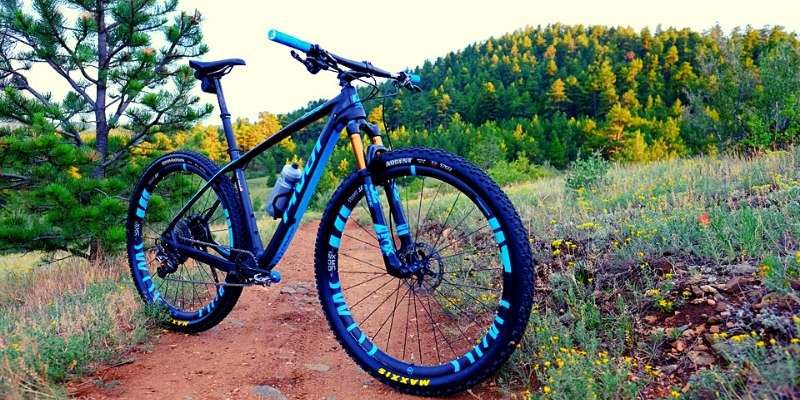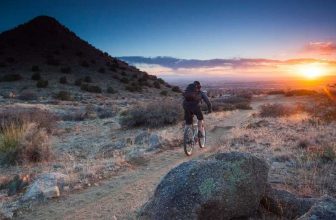
Trail bicycles usually have full suspension to handle bumps when riding downhill, allowing you to choose a fair path without getting jarred.
Even though a hardtail bike doesn’t require an expert to use, it does force you to become one. This is because it gives you a significant bump any time you choose a less than an optimal trail. Many bikers use the same method to force themselves to choose better paths on their descents.
Some riders deliberately choose hardtail bikes that don’t have rear suspension to learn to ride better and avoid obstacles on their paths.
Hardtails: What are their benefits?
The rider’s skill determines which terrains can be ridden on hardtail bikes. Hardtails can be ridden on any terrain. Since they have no suspension, they are best suited to trails with a smoother surface. Complete suspension bikes are designed to handle steep, rooty sections and rock gardens more efficiently than single-speed bikes.
In addition, less experienced riders should keep in mind that hardtails are tougher to ride as they will feel every bump on the track. This is a fun way to learn, but you should stay on the softer, less bumpy tracks so that you won’t become frustrated or have an accident.
Why Do People Still Ride Hardtails?
There is a loyal following of mountain bike riders who prefer hardtail models. These reasons include the following.
Price
Compared to full-suspension bikes, hardtails have fewer components and are much cheaper—a good option for those unsure of making significant financial commitments to the sport or on a budget.
Versatility
A full-suspension downhill bike isn’t meant to be very useful in terms of climbing. Despite this, hardtail bikes can be used for various riding styles. There may be some things it doesn’t do well, but it can handle most of them.
The simplicity
Since hardtail bikes do not have rear suspension and have fewer moving parts, they are easier to maintain and set up.
Reliability
Their decreased number of moving parts also makes them more reliable. Consequently, fewer parts can break, fewer bearings wear out, and more straightforward repairs.
Learning-enhancing
Even though they can be challenging at times, hardtails will help you understand mountains better. Hardtail riders will have an easier transition to full suspension by starting on a hardtail.
What Is the Material of a Hardtail?
Similar to other types of mountain bikes, hardtails are made of various materials, each with its own set of advantages and disadvantages.
Steel
Steel is one of the most popular materials used to build hardtail bikes because they are cheap, one of the main benefits of hardtail bikes. Steel is affordable and has superior strength properties.
Steel bikes are made from 4130 steel alloy, the industry standard. However, this is not universal.
All three materials, non-heat-treated 631, heat-treated 853, and 953, are more robust than 4130, with 953 strongest.
Steel also has the advantage that it can be repaired if anything goes wrong – maybe in a big crash.
Aluminium Alloy
This alternative initially replaced steel. It makes the bike more agile and lighter since it is lightweight.
Despite being more expensive and brittle than steel, well-maintained steel bikes can last for a very long time.
Titanium
The metal is as strong as steel but much lighter. At first glance, it seems like the best of both worlds. Besides being flexible, it can also maintain its shape, making it a highly efficient cushion.
There is, of course, always a catch. The extraction and processing of titanium are costly and challenging, which means that the bikes are much more expensive. The cost of titanium bikes is even more than twice that of other bikes. Titanium may not be the most suitable choice if cost is a serious consideration.
Although titanium is a metal that does not become brittle with age, titanium bikes can be an excellent investment.
Carbon
The advantages of carbon fiber as a bike material are numerous. Among them is its stiffness in one direction and its flexibility in another. As a result, bikes can be designed to absorb shock in one direction while remaining rigid in the other. This means that they are more responsive and maneuverable.
Additionally, the bikes tend to be the lightest and most durable available.
It is significantly more expensive to buy a carbon bike than an aluminum one, although titanium bikes are cheaper. Carbon bikes are being adopted by more manufacturers every year, meaning that their price is dropping, and they are becoming an increasingly viable option for riders.
What’s the most annoying thing about riding a hardtail?
There is nothing wrong with riding a hardtail. A hardtail is fun to ride, even if you have a full-suspension bike. Another benefit of owning a hardtail is that it provides you with bragging rights after spending a day out on the trails.
Hardtails have only one real downside: if the terrain is bumpy, rooty, or rocky, they can be challenging to ride.
Frequently Asked Questions
Would You Recommend A Hardtail Mountain Bike To A Beginner?
Beginners can benefit from hardtail mountain bikes. It is also much less expensive than full-suspension bikes, so people just starting do not have to invest a lot of money and learn how to ride.
A better skill set is built before moving on to complete suspension bikes by riding without full suspension. It gives riders a better feel for trails and how their bikes handle.
Do Hardtails Work Well for Trail Riding?
Compared with cross country bikes, trail bikes must handle more terrain. If appropriately configured, hardtails can be helpful for this. The bikes have more suspension and slacker angles at the front for handling more aggressive riding.
How popular are hardtails today?
Hardtails are still a popular choice for riders elsewhere despite their disappearance from the racing scene, except for less technical cross-country trails.
Hardtail bikes are becoming more popular among riders as designs improve and are trail-oriented.
Final Thoughts
Pack the essentials regardless of whether you ride a hardtail or a full-suspension bike, regardless of how short a ride you anticipate. Prepare your backpack with things like a first-aid kit, a repair kit, and other items so that you will be as prepared as possible for any unexpected problems that might arise.






